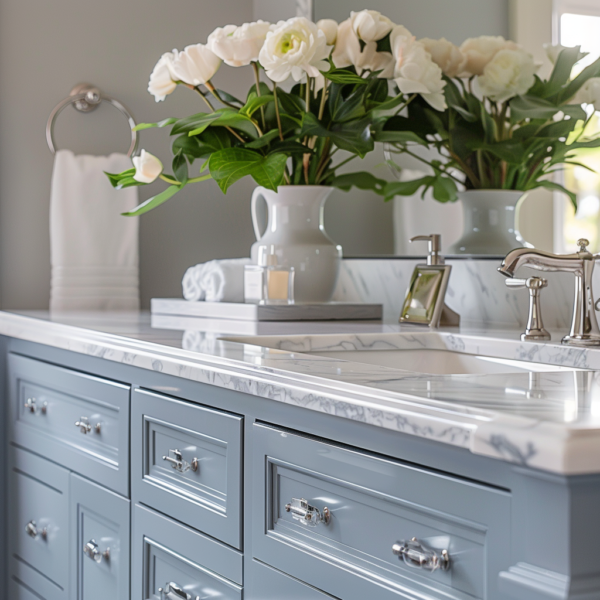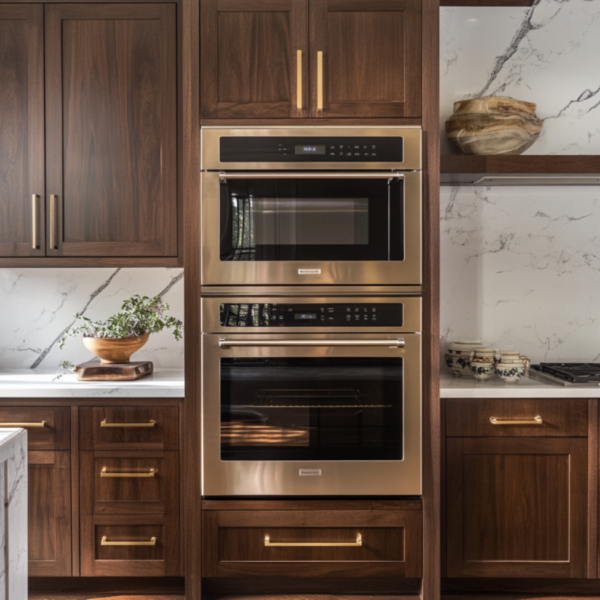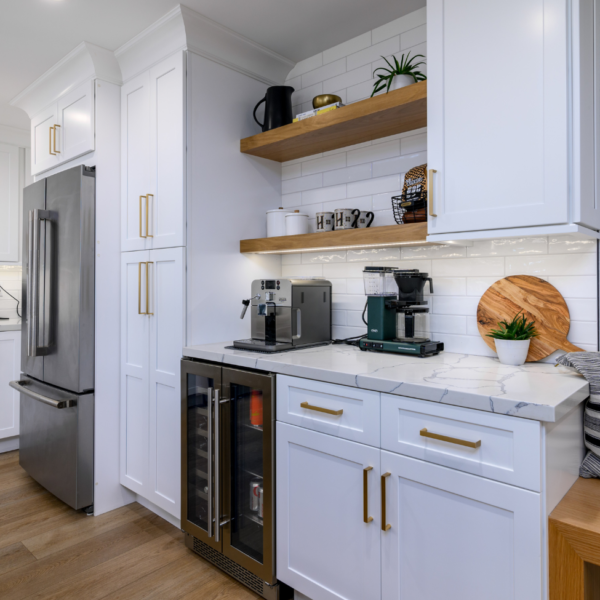Embarking on a bathroom remodel is an exciting journey, but understanding the contractor’s estimate is crucial to ensure your project stays on track and within budget. In addition to what you pay the Contractor, you there are other fees that might be incurred that should be in your budget. Here’s a brief guide to help you decode the estimate and make informed decisions.
Breakdown of Costs
The estimate should clearly outline the costs associated with materials, labor, permits, and any additional fees. Look for a detailed list of materials including fixtures, tiles, cabinetry, and finishes. Labor costs typically cover the work of plumbers, electricians, carpenters, tile installer, etc.
Scope of Work: Ensure the estimate specifies the entire scope of work, not just a vague statement about the work being done. This includes demolition, plumbing, electrical work, tiling, installation of fixtures, and finishing touches. Let’s take demo for example, make sure it is spelled out everything that is being removed. Floor, Shower Tile, Vanity Cabinets including countertop, Mirror, Lighting, Etc. Does demo include the haul away and disposal of debris or do you have to pay for the dumpster? What about containment or protection? If you are remodeling a bathroom inside a bedroom, are they going to protect the flooring leading from the bathroom, through the bedroom and down the hallway out to the dumpster? For tile install, does backsplash install include a full height wall or a 6″ slab matching the countertop? Or do they expect you to provide a vanity with a backsplash? A well-defined scope prevents misunderstandings and ensures all parties are aligned on what the project entails.

Permits: Of course no one wants to spend money on something they think they can get away without, but permits are important to make sure the work is being performed properly. Depending on where you are located, permit costs can vary even in the same city. A contractor will more than likely have to give you a ballpark on permit costs because they will not know the final cost until they actually pull the permit which they cannot do until you’ve signed a contract. In California, you can pull an Owner/Builder permit but if you plan to hire a licensed General Contactor, let them do it so they are liable for all the work. If you are working with a contractor who typically does jobs similar in scope to what you want done, they should be able to give an accurate estimate. They should not have a problem providing you with the receipt. I only charge my clients a reimbursement fee for what I paid for the permits, I never charge for pulling the permit because I am legally required to. I will charge for any drawings, printing, expediting or other expenses incurred that are required for the permit.

Materials: Not all contractors work the same when it comes to materials, especially if you are working with an Interior Designer who will be ordering the materials. Material allowances represent the budget set for specific items like tiles, fixtures, or flooring. Make sure the allowances match the quality and style of materials you expect. If the allowance is too low, you will end up paying out-of-pocket for upgrades. A contractor will typically give an allowance for the cheapest material that will get the job done, think basic white subway tile from Home Depot. It is also important to confirm their allowance is for your particular space. Since contractors bid out multiple jobs, they could have a generic allowance for materials based on a guest bathroom, primary bathroom etc. If the estimate doesn’t call out square footage, make sure to ask. Not all contractors will provide a material allowance in their estimate, leaving it up to you to purchase the materials yourself which could be good or bad. The benefit is that you have full control of the costs for the materials without any markups, but you may need to be on top of them to know when they will need the items delivered and will have to deal with any issues with the order coming damaged, missing, etc. If they let you order your materials, they SHOULD give you the square footage you need to order, including overage. If they order for you, you will be paying markups for their ordering, coordination, inspecting, etc but they also might be able to get you a discount with their preferred vendors. The biggest downside of not having an allowance is that homeowners do not know what things cost, unless you’ve done your research or been through a remodel before. If you select high end plumbing fixtures and tile, your material cost could be just as expensive as the entire labor contract. Which is why it is important, and I highly recommend, select all your materials and finishes, BEFORE you approve an estimate. Specialty finishes could also increase the cost of installation.

Shipping and Pick Up: No one likes to pay for shipping but the reality is, there are shipping or pick up fees required in Construction. If they have to send the tile installer to a warehouse to pick up, they will charge for it, and they should. But their allowance more than likely will not include any shipping or pick up fees. Most companies will account for shipping in their price or have a small standard shipping cost but not all do and the contractor or designer might not be able to do anything about it. I once had a client fall in love with a tile she saw on Pinterest that was from a small custom shop in New York, the shipping cost was more than double the cost of the tile. I’ve also had clients find a sample from somewhere online and my local tile shop is able to order the same product with out shipping fees. In a world living off of online pick up and Amazon next day delivery, shipping fees are often forgotten, but they can add up quick and ruin a budget.

Timeline: An estimate should provide an approximate timeline for the project. This helps you understand the duration of the remodel and plan accordingly. Delays can impact both the budget and your daily routine, so a clear timeline is essential. Not all contractors will provide an estimate written on their actual estimate since it is not required but this should be clearly communicated with an estimated start date. I have often seen contractors bid and start a job with the intention of working solely on that but then a bigger better paying job comes along and they postpone the current job that they have already started. Before approving an estimate, make sure they plan to have workers on site at least 3 days a week if not daily. There are some down days because of dry times, material availability, inspections, etc but for the most part, work should be performed daily for a timely completion.

Payment Schedule: Review the proposed payment schedule, in the State of California, they must provide one on their contract. It typically includes an initial deposit, progress payments at various stages of the project, and a final payment upon completion. NEVER pay for work until it has been completed. A contractor is only allowed to ask for a $1,000 deposit maximum, whether your contract is $25,000 or $500,000. They can request a progress payment for materials only AFTER the product as been delivered. As a licensed contractor myself, I provide a line item with price for each scope of work. Why? What happens if you decide to hire someone else or a situation comes up and half way through you can no longer afford the project? If a contractor only provides a lump sum for the whole job, how do you know what you are paying for? How do you know they are 60% or 80% complete with the overall job? The number one complaint that I hear from homeowners is that they overpaid or prepaid their contractor. If they receive money for a job they haven’t done, they have no incentive to come back and finish.

Post Construction Cleaning: Construction is messy. Even the best contractors can’t help drywall dust flying everywhere. There are zip walls and other protection methods but some mess in unavoidable. A contractor should do basic cleanup daily but a thorough deep clean by a cleaning professional is important, especially for larger remodels. We offer our client’s the option to hire our preferred professional cleaner to do a post construction deep clean or opt not to. They can clean just the room where construction was completed or the entire home. I highly recommend a professional cleaner who is used to seeing construction sites and has the right cleaning products for a post construction cleaning, it is much different than a typical house cleaner is used to.

Warranty and Guarantees: Check if the estimate includes information about warranties on workmanship and materials. A reputable contractor stands behind their work and offers guarantees that provide peace of mind. A year is the minimum industry standard. I recommend purchasing items like appliances and plumbing fixtures yourself so if you have issues down the road, you can easily pull up the receipts and not have to reply on the contractor. Or if you do have the contractor purchase them on your behalf, they do typically get discounts, make sure that your name is listed on the purchase order.

Workman’s Compensation: Many contractors will claim they don’t have employees so they are exempt from Workman’s Comp. If they are, that means that any subcontractor they hire must have their own Workman’s Comp or you are liable if they someone was to get hurt. It is required in the Construction Contract to inform you of the insurance that they carry and if they are exempt.
Insurance Coverage: I would be surprised if I saw a line item for insurance coverage on an estimate but Contractors are required to be insured. In the state of California, we are required to have a Contractor’s Bond and General Liability Insurance in addition to Workman’s Comp. For larger remodels, some Homeowner’s Insurance companies will require a policy be taken out during the construction, especially if moving out of the home. This is good to know ahead of time so the policy amount can be added to the budget.

Contingency Fund: Remodeling projects often encounter unexpected issues. It is smart to add a contingency fund to your budget, usually around 10-20% of the total cost, to cover unforeseen expenses. This ensures you are financially prepared for any surprises. It’s better to fix a potential problem when it comes up then to leave it and hope nothing happens. Even a good contractor can’t predict broken pipes or leaks behind a wall. Most contractors WILL NOT include this in their estimate because it makes their price too high. As a responsible homeowner, if you can only afford $40,000 for a remodel, do not approve an estimate for $38,000. Give yourself wiggle room for problems to occur or to be able to splurge on upgrades or the expensive tile you fell in love with.

Understanding a contractor’s estimate is vital for a successful bathroom remodel. By paying attention to the details, asking questions, and clarifying any uncertainties, you can ensure your project runs smoothly and meets your expectations. Happy remodeling!
Need help understanding your estimate? Feel free to reach out and ask questions or send me the estimate so I can review it with you and make sure there are no red flags.







Leave a Reply